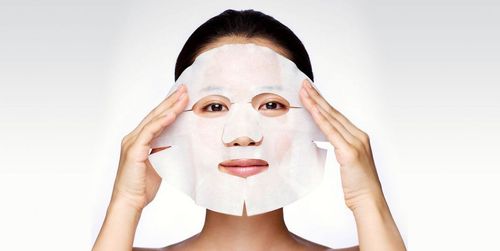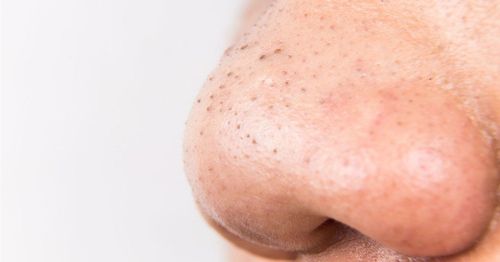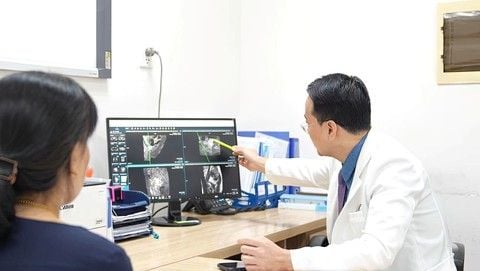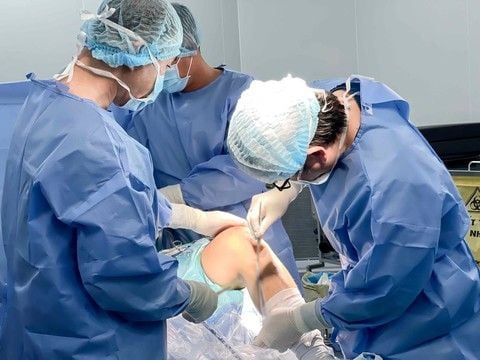Stretch marks are commonly seen in pregnant women. However, nowadays, even teenagers can experience this condition during puberty. This is because their bodies grow and develop rapidly, or due to conditions such as overweight or obesity.
1. What are puberty stretch marks?
Stretch marks occur when the tissues beneath the skin are stretched due to rapid body growth or weight gain.
Although our skin is commonly elastic, excessive stretching can disrupt normal collagen production. Collagen is a type of protein that helps link connective tissues together. When growth occurs suddenly, collagen production in the hypodermis layer of the skin cannot keep up with it. This leads to the development of marks or lines resembling scars on the top layer of the skin, commonly referred to as stretch marks.
Stretch marks may initially appear in various colors, such as red, pink, purple, or brown, and gradually fade over time. They leave thin silvery lines or faint marks that are less noticeable. In the early stages, you might feel a slight indentation on your skin when running your fingers over the stretch marks.
Substantially, it is common for stretch marks to appear during teen years, occurring in both males and females. Puberty often causes rapid growth or weight gain, leading to the appearance of stretch marks on the body. Most stretch marks in females during puberty are concentrated in areas such as the breasts, thighs, hips, and buttocks. Females are more prone to stretch marks than males.

2. What causes puberty stretch marks?
Stretch marks can appear due to:
• Rapid growth in both girls and boys during puberty.
• Pregnancy.
• Obesity which leads to excessive fat accumulation in the body.
• Engaging in physical exercises to enhance fitness or build the body.
• Use of steroids for medical conditions, such as severe asthma, over several weeks.
For women and girls, stretch marks commonly appear on the breasts, thighs (particularly the upper thighs), hips, abdomen, and buttocks. Similarly, boys can develop stretch marks in these areas, particularly if they are obese or engage in regular weightlifting to build muscle rapidly.
3. Can you avoid stretch marks?
In reality, an individual cannot entirely avoid stretch marks during puberty. Many people experience them, while others may not, even if they are overweight or grow rapidly.
On the other hand, genetics play a significant role in determining whether a person develop stretch marks. Even with a slim, fit, and healthy body, and regular use of moisturizers, a person may still develop stretch marks. This is because moisturizers cannot effectively treat stretch marks as they occur beneath the top layer of the skin, where creams cannot reach.

4. Do stretch marks from puberty go away?
Over time, the initial red or purple stretch marks will gradually fade into silvery lines that are less noticeable or might become barely visible.
In fact, stretch marks cannot completely disappear, but you can make them less noticeable through the following ways:
• Try using a concealer that matches the skin tone to cover up stretch marks. Some concealers offer excellent coverage and are highly water-resistant. However, this may not be an effective solution if you spend a lot of time in the water.
• Wear protective clothing: Specialized swimsuits with high coverage can effectively cover stretch marks on the buttocks, upper thighs, and chest.
• Many people use tanning beds or self-tanning products to hide stretch marks. However, this often proves ineffective as stretch marks are less likely to fade and may become more apparent. Moreover, tanning beds are more harmful than beneficial for your skin’s long-term health.
Generally, stretch marks cannot be entirely erased without the help of a dermatologist or cosmetic surgeon. A doctor may use one of several treatments, such as actual surgery or techniques like microdermabrasion and laser therapy, to reduce the appearance of stretch marks.
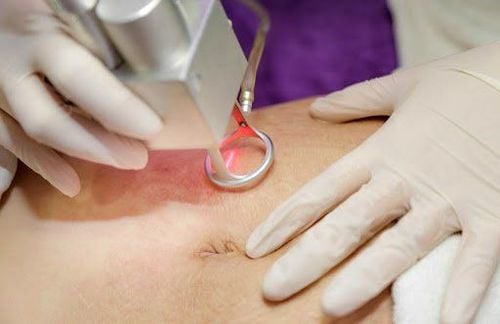
However, these methods are often expensive and carry certain risks. Therefore, doctors usually do not recommend them for teenagers, as their bodies are still developing, and new stretch marks may still appear. While existing ones naturally fade over time.
5. How can you prevent stretch marks during puberty?
Young people should take good care of their bodies to prevent stretch marks during puberty. This generally includes healthy eating, staying active, proper skincare, and adequate sun protection.
You should exercise regularly for about 30 minutes daily. This is not only a healthy way to lose weight and maintain a fit physique, but it also increases skin elasticity, making the skin firmer. As a result, the appearance of unattractive stretch marks on the body can be minimized.
To arrange an appointment, please call HOTLINE or make your reservation directly HERE. You may also download the MyVinmec app to schedule appointments faster and manage your reservations more conveniently.
Reference sources: cyh.com, kidshealth.org
To arrange an appointment, please call HOTLINE or make your reservation directly HERE. You may also download the MyVinmec app to schedule appointments faster and manage your reservations more conveniently.
